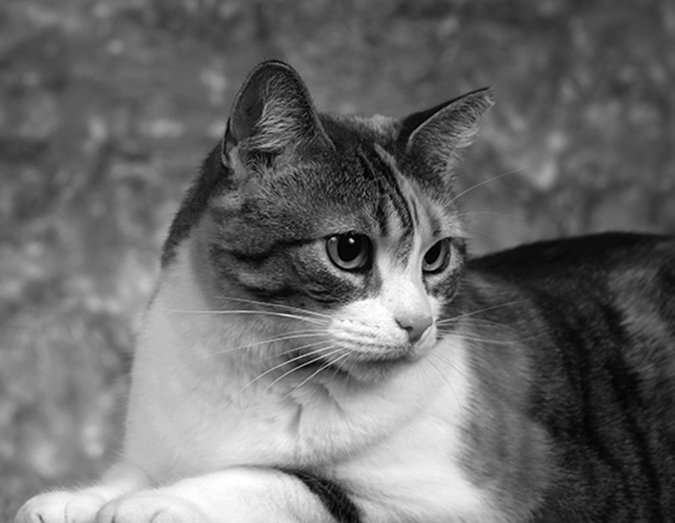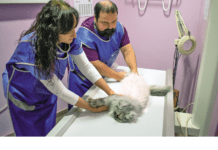

Q: My 10-year-old domestic shorthaired cat has just been diagnosed with high blood pressure during a visit to his veterinarian. I was shocked to learn this, as he does not show any signs of having a problem, and I am now very concerned about how to keep him healthy. I am working with his veterinarian to treat him, but should I be restricting his salt intake?
A: Thank you for contacting us and for your obvious love of your boy. Your question regarding sodium restriction is an excellent one, particularly given the common recommendation by many human physicians that their patients decrease their sodium intake. Unlike in humans, there is no good evidence that restricting dietary sodium intake is effective at decreasing blood pressure in cats. In fact, extreme sodium restriction can have deleterious effects on cats.
For these reasons, the current consensus is that dietary restriction of sodium beyond what would normally be found in proprietary cat food is not recommended. Of course, owners should avoid extreme amounts of sodium in their cat’s food, particularly if they have kidney disease, but other than that, no specific restriction of sodium is necessary in cats with hypertension.
Elevated blood pressure in the arteries of the body, called systemic hypertension, is a disease that is commonly diagnosed in cats, usually (approximately 80 percent of the time) in association with other diseases, such as kidney disease and hyperthyroidism.
When elevated blood pressure can be attributed to a coexisting condition or to the administration of drugs, it is termed secondary hypertension. In approximately 20 percent of cases of hypertension in cats, no other disease process or drug-associated cause is identified. These cases are classified as idiopathic hypertension.
It is important to realize that, as in humans, the measured blood pressure may be artificially elevated due to the anxiety associated with visits to the veterinarian (called white-coat syndrome in humans). For this reason, it is essential that veterinary professionals strive to minimize stress in their feline patients when measuring blood pressure by following careful guidelines regarding handling of the cat, repeatability of measurement and interpretation of results.
In cases of secondary hypertension, the primary goal is to address the underlying disease process and/or refrain from administering pressure-elevating drugs. This often will result in a resolution of the disease. In some cases of secondary hypertension, the disease may persist in spite of appropriate management of the primary disease process and/or cessation of pressure-elevating drugs.
Regardless of the cause of hypertension, veterinarians will work to normalize blood pressure, either by addressing the primary problem with secondary hypertension (disease process or drugs) and/or by administering blood pressure-lowering drugs. Elevated blood pressure can lead to damage in the eyes, kidneys, brain and/or the heart, so normalization of blood pressure as quickly as possible is essential. In rare cases, elevation of blood pressure can be so extreme that emergency measures to decrease blood pressure acutely are undertaken.
I hope that this is helpful. You might also want to refer to the article on hypertension (“Hypertension A Threat to Cats?“) in the December 2015 issue of CatWatch. I recommend that you work closely with your cat’s veterinarian to figure out whether your kitty has any underlying diseases that may predispose to hypertension and to formulate an appropriate plan of action for addressing his high blood pressure. This may take some time and patience, but with diligent monitoring, treatment and follow up, most cats with hypertension can have their blood pressure controlled and can have an excellent quality of life.
—Sincerely, Elizabeth


